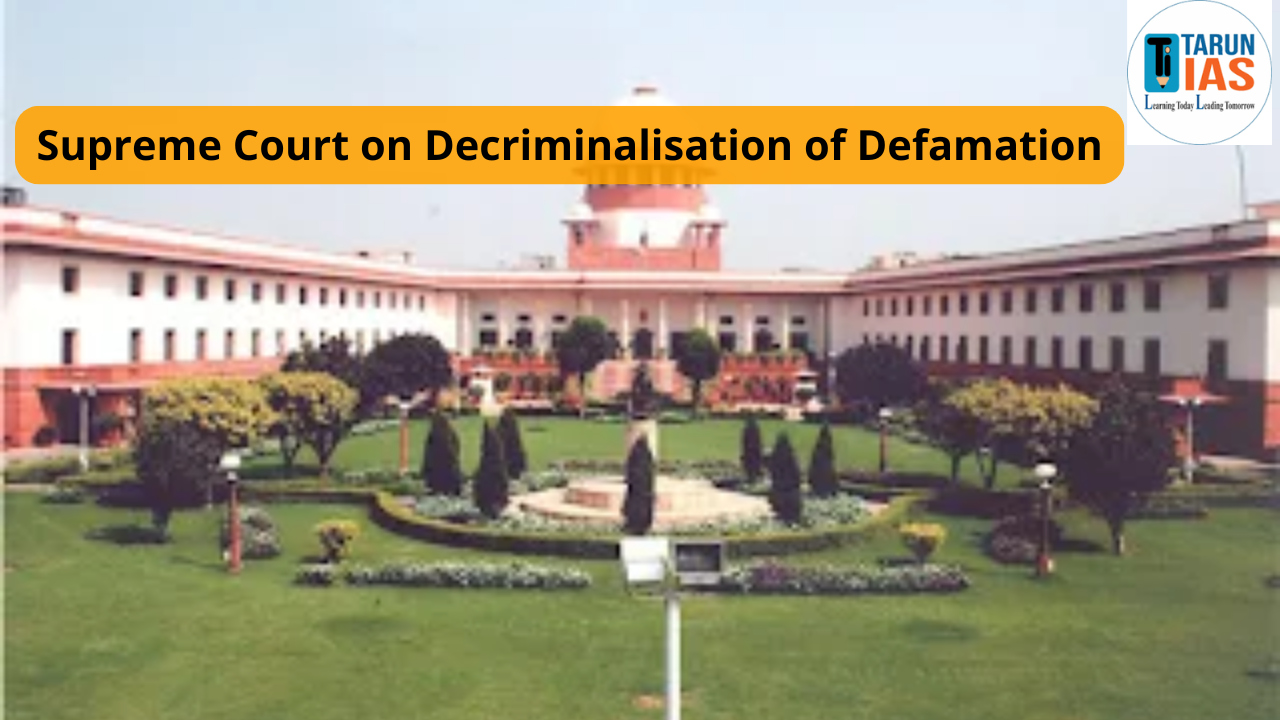Introduction
- Artificial Intelligence (AI) is rapidly shaping the technological landscape, influencing politics, society, and the economy.
- The Ministry of Electronics and Information Technology (MeitY) in India recently introduced the “Report on AI Governance Guidelines Development” for public consultation.
- This initiative stresses the importance of ethical and inclusive AI governance.
- Additionally, India’s IndiaAI mission aims to integrate AI within governance systems.
What is Artificial Intelligence?
- Artificial Intelligence refers to machines or systems designed to mimic human intelligence, capable of performing tasks such as learning, reasoning, and decision-making.
- AI is not a singular technology but a collection of methodologies aimed at replicating human thought processes in machines.
- One particularly influential subset of Artificial Intelligence (AI) is Generative AI, which can produce text, images, and even audio. For instance, generative models can create realistic facial images by manipulating parameters such as eye color, hair texture, and skin tone.

Positive Impacts of Artificial Intelligence
- Innovative Policy Development: Artificial Intelligence (AI) is playing a crucial role in transforming how policies are developed by streamlining legislative processes. In several countries, AI tools are used to analyze large datasets, including public opinions, historical legislative data, and societal trends, to craft more efficient and relevant policies. For example, in the U.S., Artificial Intelligence (AI) has been utilized to draft bills and analyze their potential impact before introduction. By analyzing vast amounts of data, AI can help lawmakers identify potential issues and solutions, leading to more informed decision-making and quicker responses to emerging challenges.
- Enhanced Political Messaging: Artificial Intelligence (AI) is enabling political campaigns to craft highly targeted and personalized messages for specific voter demographics. Political campaigns are increasingly using data analytics to understand voter preferences, behavior, and emotional triggers, allowing them to tailor messages effectively. During the 2016 U.S. Presidential Election, Cambridge Analytica famously used AI-driven analytics to gather data on voters’ psychological profiles, tailoring campaign messages for different demographic groups. Similarly, AI-powered tools like IBM Watson Analytics have been used in various global campaigns to optimize political messages by analyzing voter sentiments, making campaign communication more strategic and effective.
- New Political Platforms: Artificial Intelligence (AI) is creating entirely new political platforms, reshaping how political ideologies and engagement are formed. In innovative political movements, AI is utilized not just for communication but for generating political strategies and developing ideologies.
- Economic Contributions: AI is revolutionizing the political finance sector by improving fundraising methods and managing political contributions. Political campaigns now use AI-driven platforms to identify and target potential donors more effectively by analyzing voter behavior, social media interactions, and online engagement patterns. For example, AI-driven platforms like Crowdpac use data analysis to identify potential donors and target fundraising campaigns more effectively.
- Campaign Strategies: Artificial Intelligence (AI) is reshaping political campaign strategies by enabling real-time adaptation and broader voter engagement. One significant application of AI in this regard is its ability to translate political speeches into multiple languages simultaneously. This ensures that political leaders can communicate directly with voters from different linguistic backgrounds, enhancing the inclusivity of campaigns. For example, in India’s 2019 general elections, AI-driven technologies were employed to provide live translation of political speeches into various regional languages, helping political leaders reach a broader audience.
Read also: California Wildfires: Causes, Impact & UPSC Notes
- Improved Healthcare Systems: Artificial Intelligence (AI) is revolutionizing healthcare by significantly enhancing diagnostic accuracy. AI models can analyze medical images, such as X-rays, CT scans, and MRIs, to detect diseases earlier and more accurately than traditional methods. For instance, Niramai, an Indian healthcare startup, uses AI for breast cancer screening through thermal image processing, offering a non-invasive, radiation-free method to detect early signs of cancer.
- According to a report by NASSCOM (National Association of Software and Service Companies), AI in healthcare could save up to 100 billion USD for the Indian healthcare system by enhancing diagnostic accuracy and reducing treatment costs.
- Boosting Agriculture: Artificial Intelligence (AI) is transforming agriculture, helping farmers adopt precision farming techniques that optimize crop yields and improve overall productivity. In India, Tata Consultancy Services (TCS) launched the AgriTech platform, which leverages AI to provide farmers with insights on weather patterns, soil health, and optimal planting times. Also, CureMetrix, an AI-driven platform, helps Indian farmers increase crop productivity by offering real-time insights about pest infestations, irrigation needs, and crop diseases.
- Creating Empathy for War-Torn Regions: AI is being used to create empathy and raise awareness about global humanitarian crises, such as war-torn regions. The Deep Empathy Project by MIT and UNICEF uses AI-generated images to depict the harsh realities of conflict zones like Syria and Yemen. These images aim to evoke emotional responses and increase public awareness of the suffering experienced by displaced individuals.
- Voice Restoration: Artificial Intelligence (AI) technologies are helping individuals suffering from neurodegenerative diseases, such as amyotrophic lateral sclerosis (ALS), restore their ability to communicate. The Voicebank Project, developed by the Indian Institute of Technology (IIT) Madras, is using AI and speech synthesis techniques to create personalized voice models for ALS patients. The system helps patients who have lost their ability to speak to regain their voice through AI-generated speech that mimics their natural voice, greatly improving their quality of life and ability to interact with others.
- AI in Creative Arts and Entertainment: Artificial Intelligence (AI) is making significant contributions to the creative arts and entertainment industries. In the realm of cinema, AI-driven deepfake technology is improving dubbing and visual effects in films, as well as resurrecting deceased actors for posthumous performances. In India, FilmFare has collaborated with AI-powered platforms to create deepfake versions of iconic Bollywood stars for tribute videos and special features. In addition, AI has been used to create realistic CGI versions of deceased actors, allowing for their inclusion in films and advertisements. Samsung’s AI lab in Moscow used similar technology to bring the Mona Lisa to life, enhancing artistic experiences with AI.
- Enhancing Education and Learning: AI is increasingly being used to make education more accessible and personalized in India. AI-driven platforms are helping address issues like teacher shortages, lack of resources, and diverse learning needs. For example, BYJU’s, one of India’s largest ed-tech companies, uses AI to provide personalized learning experiences to students. The platform adjusts its content based on the learner’s pace, strengths, and weaknesses, ensuring that each student receives an education tailored to their needs. According to a PwC India report, AI in education can improve the learning outcomes of Indian students, particularly in rural areas, by providing affordable and scalable education solutions that were previously unavailable.
- Boosting Financial Inclusion: AI-powered tools are helping people access banking and financial services without the need for traditional infrastructure. For instance, Jio Payments Bank, launched by Reliance Jio, uses AI and machine learning algorithms to offer banking services to rural areas. These AI systems help in credit scoring, fraud detection, and personalized financial advice, thus providing unbanked populations with access to financial services. Additionally, AI is being used to develop microloans, with platforms like Lendbox leveraging AI to provide customized loan offers to individuals and small businesses. AI’s role in financial inclusion is helping lift millions out of poverty and reducing inequality.
- AI for Disaster Management and Response: AI-driven predictive models are being developed to forecast natural disasters such as floods, cyclones, and droughts, helping authorities take proactive measures. For instance, the Indian National Centre for Ocean Information Services (INCOIS) uses AI to predict cyclones and tsunamis, allowing for better evacuation plans and reducing the loss of life and property. Additionally, AI systems like Google’s Flood Forecasting Initiative in collaboration with the Indian government are providing real-time flood predictions, which help millions in flood-prone areas prepare in advance and reduce damages caused by floods. These AI tools are improving disaster response times and saving lives.
- AI in Law Enforcement and Security: AI is improving public safety and law enforcement in India by enhancing surveillance and crime prediction systems. AI-powered facial recognition systems, such as those used by the Delhi Police, are being employed to track and apprehend criminals in real-time. Additionally, AI tools are being used to predict crime hotspots by analyzing historical data, thus allowing law enforcement to allocate resources more effectively and prevent crime. The National Crime Records Bureau (NCRB) in India is utilizing AI to streamline crime data analysis, enabling quicker identification of crime trends and patterns across the country.
Negative Impacts of Artificial Intelligence
- Promotion of the ‘Liar’s Dividend’: Deepfake technology, a rapidly evolving form of AI-generated media, is being increasingly weaponized in political environments. The concept of the “Liar’s Dividend” refers to how manipulated or fabricated media can be dismissed as “fake news,” even when they present inconvenient truths. This undermines the ability of the public to discern reality from fiction. For example, during the 2020 U.S. presidential election, deepfakes were used to produce misleading videos of political candidates. One prominent case involved deepfake videos of Donald Trump, where his statements were altered to mislead voters. These AI-created media blur the line between fact and fabrication, making it harder for voters to trust political information and contributing to a culture of skepticism.
- Erosion of Trust in Democratic Processes: AI-generated content, such as deepfakes and doctored videos, poses a severe threat to public trust in democratic institutions, particularly elections. A prime example of this occurred during the 2021 Capitol Hill riots, when fake videos were circulated to incite anger and confusion. Some of these videos were altered to show violent actions by authorities, leading to widespread misinformation. As a result, public trust in the electoral process and democratic institutions was significantly undermined, highlighting how manipulated media can erode democratic values by distorting public perception and fostering political instability.
- Manipulation Risks: Artificial Intelligence (AI) tools can be exploited to manipulate public opinion and sway elections through the creation and dissemination of false political narratives. During the 2016 U.S. presidential election, AI-driven bots and algorithms were used to target voters with fake news and political propaganda. Research has shown that the dissemination of false stories on social media during this period influenced public opinion, especially through algorithms that prioritized sensational content.
- Ethical and Legal Challenges: The increasing role of AI in politics raises profound ethical and legal concerns. One key issue is the emergence of AI-driven political contributions and even the potential for AI-created political parties. In 2020, the “AI Party” was created in the UK, which proposed using AI to analyze public sentiment and influence policies. While this may increase efficiency, it also raises serious concerns about the diminishing role of human agency in political decision-making.
- Crime Against Women: Artificial Intelligence (AI) is increasingly being misused to create deepfake videos that target women, often for exploitative purposes. According to reports from Deeptrace, over 90% of AI-generated deepfake videos are pornographic, with many specifically aimed at degrading the dignity of women.
- Fuelling Radicalization and Violence: Terrorist organizations have begun using AI-generated fake videos to further their agendas, often by spreading disinformation and inciting violence. Groups like ISIS and Al-Qaeda have been known to produce and distribute doctored content depicting armed forces committing atrocities, which is then used to stir anti-government sentiment and recruit radicalized individuals.
- Job Losses: AI’s integration into various sectors has raised concerns about significant job displacement, especially in industries such as customer service and retail. AI-powered chatbots, like Zomato’s Zia in India, are increasingly replacing human workers in customer service roles, leading to fears about mass unemployment as businesses look for more cost-effective automation solutions.
- Data Privacy Concerns: The ability of Artificial Intelligence (AI) to process large volumes of personal data raises significant concerns about privacy and security. Artificial Intelligence (AI) systems often collect sensitive data from individuals to improve performance, such as tracking browsing behavior, social media activity, and purchase history. In India, the implementation of AI-driven apps like Aadhaar, the national biometric ID system, has sparked concerns over data privacy. There have been instances of data leaks and unauthorized access, leading to fears about the security of citizens’ personal information.
- Environmental Impact: AI’s extensive reliance on computational power and energy consumption has a significant environmental footprint. Training advanced Artificial Intelligence (AI) models requires powerful data centers that consume vast amounts of electricity, contributing to higher carbon emissions. For example, training a transformer model with 213 million parameters can result in carbon emissions equivalent to 125 flights between New York and Beijing.
Artificial Intelligence (AI) Regulation in India
- India is taking significant steps toward regulating Artificial Intelligence (AI). The Digital India Framework aims to govern AI responsibly, ensuring ethical use and protecting citizens. The National AI Programme and the National Data Governance Framework Policy are vital in ensuring that AI is used ethically and that data handling remains secure.
- The Draft Digital India Act is another crucial initiative by MeitY to regulate AI and emerging technologies. It aims to replace the existing IT Act and will include specific provisions dedicated to AI, ensuring that its use adheres to ethical standards and protects citizens.
AI Regulation Globally
- European Union: The EU has proposed the Artificial Intelligence Act, which seeks to regulate AI comprehensively, focusing on safety, ethics, and fairness.
- United States: The White House released a Blueprint for an AI Bill of Rights, which outlines fundamental principles for AI development, focusing on privacy, transparency, and accountability.
- Japan: Japan’s Society 5.0 initiative integrates AI with societal challenges to drive innovation and solve complex social problems.
- China: China has introduced the Next Generation Artificial Intelligence Development Plan, alongside ethical guidelines and laws governing AI applications and algorithmic recommendations.
Read this: North Atlantic Treaty Organization (NATO): Origin & Mandate | UPSC
Way Forward
- De-biasing AI Training: To ensure fairness, AI systems must be trained on diverse and representative datasets to avoid reinforcing societal biases, such as those based on gender, race, or socioeconomic status.
- Transparency and Accountability: It is essential to ensure that AI systems operate with transparency, providing users with information about their limitations, risks, and impacts. This will help build public trust in AI technologies.
- Privacy Protection: Governments must implement robust data protection laws to safeguard user privacy and prevent the misuse of personal information by AI systems.
- Ethical Use of AI: Countries should work towards the universal adoption of the Bletchley Declaration, which promotes ethical AI practices and ensures that AI is used only for the benefit of humanity.














